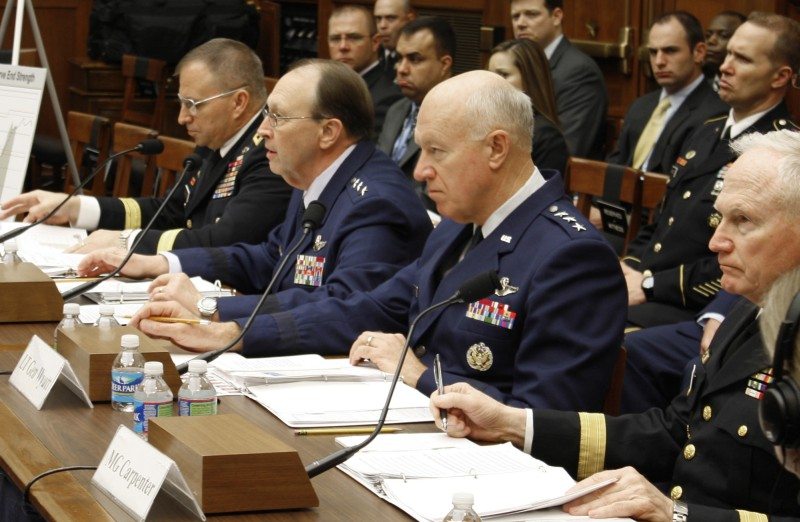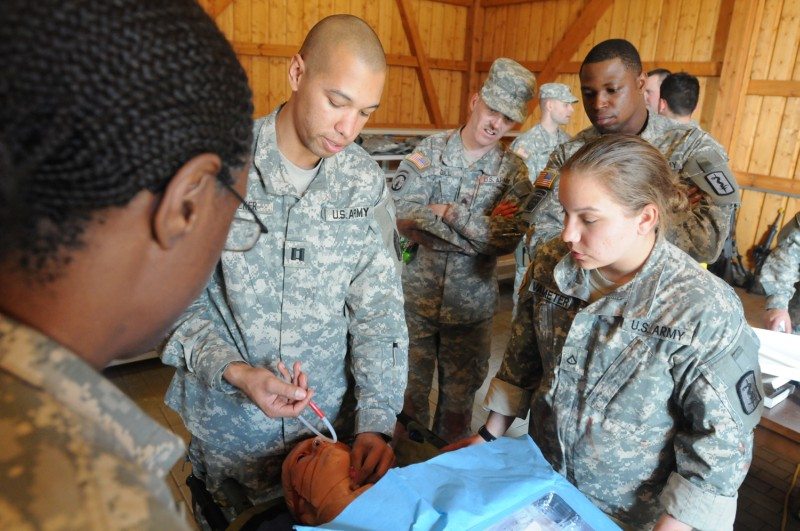As Congress continues to debate and find ways to fund the fiscal 2011 budget, Reserve leaders were on Capitol Hill to testify and answer questions about the president’s fiscal 2012 budget that was introduced in February.
The House Armed Services Committee’s subcommittee on Tactical Air and Land Forces called witnesses to discuss equipment and budget needs with Army and Air Force leaders of the Reserve and National Guard on April 1.
“The (fiscal 2012) President’s Budget Request would fund Air Force Reserve requirements of approximately $5 billion,” said Lt. Gen. Charles E. Stenner Jr., the chief of Air Force Reserve at the Pentagon and commander of Air Force Reserve Command at Robins Air Force Base, Ga. “Not only does our (fiscal 2012) budget request ensure Air Force reservists are trained and prepared to support Air Force and combatant command requirements, but it also demonstrates our commitment to the DOD’s focus on efficiencies.”
“Efficiencies” are DOD efforts to reduce excess overhead costs by $100 billion over the next five years and apply the savings to force structure, modernization and readiness.
Secretary of Defense Robert Gates directed a comprehensive assessment of every DOD organization as part of the fiscal 2012 budget request.
Air Force Reserve officials identified $195 million in efficiencies for fiscal 2012 alone, Stenner said.
Through leveraging new technology and streamlining force management efforts, reservists paved the way for taxpayer savings and increased capability, he said.
The fiscal 12 budget proposes the operation and training of 34 Air Force Reserve wings, funds 117,769 flying hours, maintains 344 aircraft, and provides for the readiness of 71,400 reservists and 4,157 civilian employees.
The Air Force Reserve budget request is about 4 percent of the total Air Force budget, and includes $2.27 billion for operations and maintenance for air operations, service support and civilian pay; $1.7 billion for military personnel; and $34 million for military construction.
“In an increasingly limited fiscal environment, reservists remain efficient and cost-effective solutions to our nation’s challenges,” Stenner said. “Reservists are called to active duty when the nation needs them. Afterward, they return to their civilian lives. This not only saves money on pay, but cuts down all related personnel expenses, benefit costs and infrastructure.”
Stenner’s testimony presented three focus areas: force readiness; force rebalance; and force support.
“Increasing integration of all three Air Force components — regular Air Force, Guard and Reserve – requires us to take holistic approach to force readiness,” the general said. “Sustaining operations on five continents has resulted in much wear and tear on our aging equipment.”
Along with the challenges of upgrading aircraft with better targeting, self-protection and communication capabilities, Air Force Reserve officials are upgrading their infrastructure of flight facilities and buildings.
“In (fiscal 2012), our budget request of $34 million will fund the construction of an airfield control tower at March Air Reserve Base, Calif., and a special civil engineering RED HORSE readiness and training facility at Charleston AFB, S.C.,” Stenner said.
Rapid Engineer Deployable Heavy Operational Repair Squadrons, known as RED HORSE, provide the Air Force with a highly mobile civil engineering response force to support contingency and special operations worldwide.
Also, Force readiness includes manpower.
“To meet the current needs of the Air Force, the Air Force Reserve will grow to a programmed end-strength of 71,200 this year,” the general said. “In the (fiscal 2012) budget, we have requested an end-strength of 71,400.”
In his second focus area of force rebalance, the general stressed that total force initiatives are a priority for the Air Force as a whole and are critical in an environment searching for efficiencies. Total force initiatives includes three types of associations or unit structures: “Classic Associations,” “Active Associations,” and “Air Reserve Component Associations.”
The “classic” model features a regular Air Force unit which retains primary responsibility for the weapon system and hosts a Reserve or Guard unit as a tenant. This model has flourished in the strategic and tactical airlift communities for more than 40 years. Under the “active” model, the Air Force Reserve or Guard unit is host and has primary responsibility for the weapon system while the regular Air Force provides additional aircrews, maintenance and support people to the unit. The “Air Reserve Component” model features the Air Force Reserve and Air National Guard working side-by-side in the operation and maintenance of the aircraft.
“Associations are not simply about sharing equipment,” Stenner said. “They enhance combat capability and increase force-wide efficiency by leveraging the resources and strengths of the regular Air Force, Air National Guard and Air Force Reserve. Reservists provide the nation’s insurance policy: the ability to surge in times of national crisis.”
Currently, there are more than 90 associations across all Air Force mission areas.
During his discussion of his third point, force support, Stenner stressed the importance of reservists balancing their relationships with their families, civilian employers and their military duty.
“The Air Force Reserve is proud of the close ties we have with our local communities,” he said. “Maintaining employer support and stability is critical. Less than one percent of the American population serves in uniform today. While the burden of war has had little direct impact on the general population, the burdens carried by our military families can have far reaching effects on local communities.”
Stenner’s closing remarks to the committee described his pride that Air Force reservists are ready and are serving wherever needed.
“A recent survey highlighted the fact that one-in-three Air Force reservists has volunteered to deploy,” Stenner said. “Since 9/11, more than 60,500 Air Force reservists, which equates to 76 percent of our current force, have answered our nation’s call and deployed to combat or supported combat operations on active duty orders. We cannot take this high-level of commitment for granted, and must do our best to ensure their continued service is used appropriately and efficiently.”











